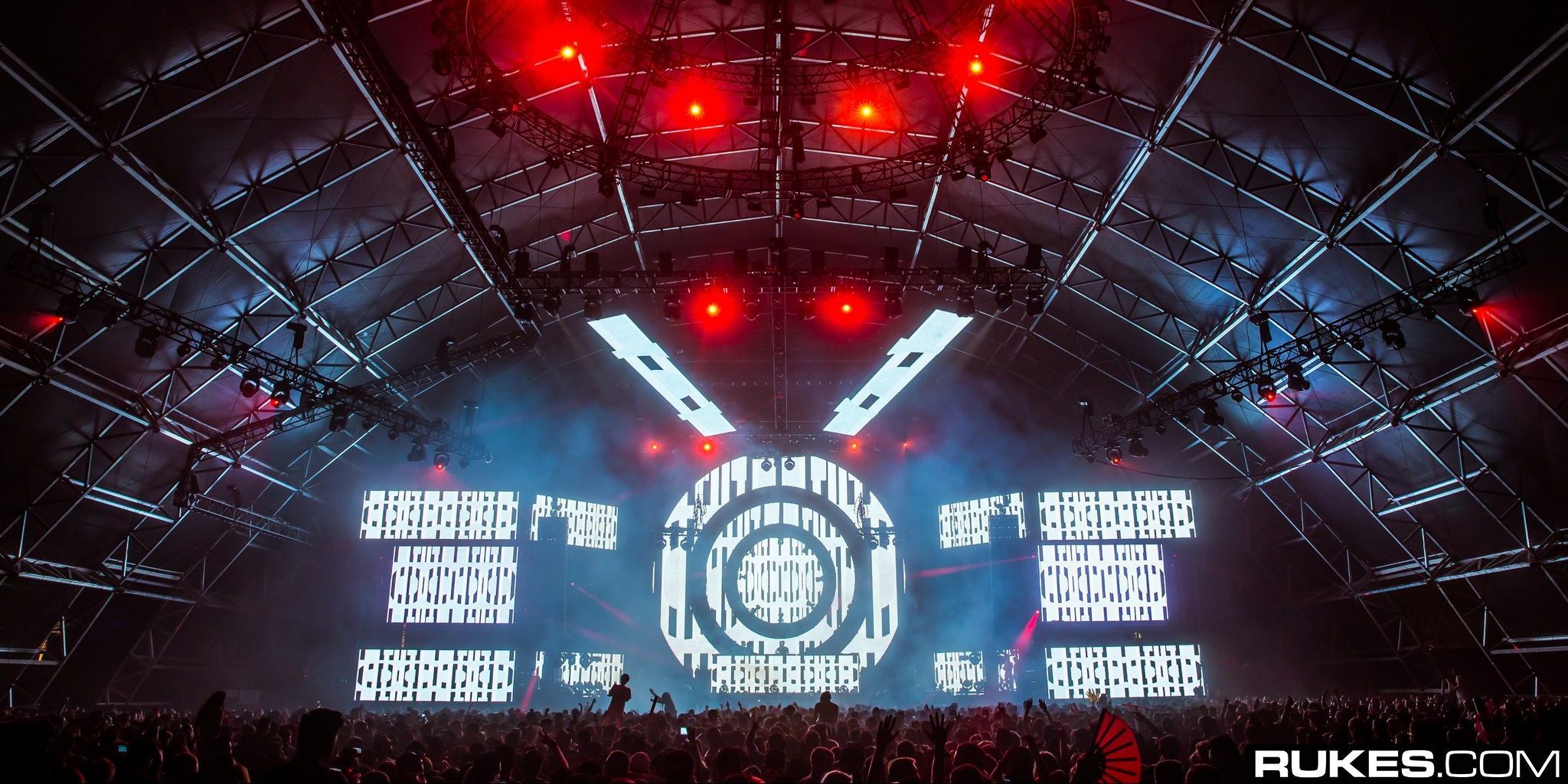The headline of this article is actually a bit misleading. Sahara tent started changing years ago, but now the paint is dry. Coachella‘s infamous dance tent barely lives up to its name anymore.
Coachella’s lineup has always represented the modern music scene, and this year’s lineup is clear evidence of EDM’s descent.
On any given day of Coachella around ten artists perform at the Sahara tent. And now since EDM blew up, any DJ who makes it to the first line is too big to play Sahara. As such, in 2018 Friday is the only day to feature more than five DJs who would traditionally belong there. It is sure to be a great day with Deorro, Rezz, Alison Wonderland, and more, but after that dance music will be confined to the Yuma tent and Do LaB.
Filling the gap left by the lack of DJs is the current ruler of pop music: rap.
Rappers like Rae Sremmurd and Vince Staples got prime slots in Sahara last time they were at Coachella in 2016. That same year, electronic favorites like Mr.Carmack played in the middle of the day. Now pop rappers like G-Eazy and Vince Staples are the backbone of Coachella.
At this rate Sahara DJs might join the ranks of punk and metal at Coachella; confined to fine print placements and playing niche slots at Mojave and Gobi.
It happened gradually so it doesn’t seem like a big deal, but the idea of Sahara tent without DJs would be a milestone for Coachella. When Coachella started back in 1999, electronic music was far from its heyday. Yet Legendary DJs like Richie Hawtin and Sasha were booked for the inaugural edition of the festival.

Looking back, those bookings were quite a risk. Today electronic artists are guaranteed to draw a sizable crowd. In 1999 Coachella booked them to introduce their attendees to new styles.
Even though most people were coming to see Beck and Rage Against the Machine, Goldenvoice saw fit to put the Belleville Three in the Sahara Tent. Fast forward to 2006 and Daft Punk is unveiling the Pyramid in the same tent. Fast forward to 2014 and Sahara is the most crowded stage at Coachella.
That tent was a living testament to the rise of electronic music, and now it’s becoming a rap destination. But not a comprehensive rap destination. A party rap destination.
Throughout the years Sahara has become separate from the other tents in terms of production. Where the other outdoor stages rely on Coachella’s desert landscape as a backdrop, Sahara is saturated with lasers, lights, and screens.
It’s comparable to one of those Vegas mega-clubs, with “Vegas” being the operative word. There aren’t many genres of music featured in Vegas clubs. Basically all you can find are big electronic and party rap, and that’s exactly what you’ll find in Sahara.
In 2016, G-Eazy and his NorCal trap beats were in Sahara at night, while Joey Bada$$ with his smooth flow played MainStage in the afternoon. Based on that separation anyone who has more than a casual interest in music could discern the reason for the varied placement.
Photo by Adam Elmakias
The tent that once provided something new and fresh for a bunch of alt-rockers is now the tent that accommodates the mainstream. While this may seem tragic, it actually creates an interesting dynamic for the future of Sahara tent.
The only other stage that adheres to any sort of theme at Coachella is the Yuma tent, Coachella’s own nightclub. However, the lines are starting to blur between what belongs in the Yuma and what belongs in Sahara.
As a representation of the modern music scene, the 2018 Coachella lineup reflects something else: tech house has a rapidly growing fanbase.
After all, big outdoor stages with massive production are not foreign to tech house DJs like Hannah Wants and AC Slater, both of whom are on the lineup this year.Tech house DJs vastly outnumber the EDM DJs, and with their increased popularity many of them could be at Sahara.
Putting AC Slater at Sahara would actually be a good idea. The last time he played in 2016, the Night Bass crew came out in force. His set was at 1 p.m. on Sunday, and the Yuma was at capacity. People were standing in line when it was 90 degrees out there to get a chance to see him. Then as soon as his set ended the crowd dissipated.
The reason I know this is because I was waiting in that line to see Fur Coat right after. Fur Coat are one of my favorite techno acts, and yet less than 50 people were at their set.
Consider that for a moment. A tech house DJ overfills the Yuma. A techno duo empties it. Perhaps putting tech house at Sahara wouldn’t be the worst idea.
Coachella already gave credence to this trend by booking Claude Vonstroke at Sahara in 2015, and this year Justin Martin is on the lineup. He played Yuma in 2016 and Do Lab in 2017, but a lot can change in a year. Dirty bird is bigger than ever, which may lead to Justin being too big to play Sahara. Stranger things have happened at Coachella.
Once the set times are released next month the shape of Sahara’s future will become clearer. Coachella has survived this long because of its ability to adapt and innovate, and Sahara’s roster will be a concrete example of that. Coachella could decide to prop up EDM by giving the few DJs on the lineup coveted slots. Or rap could simply demolish EDM at Sahara while the lines for Yuma become longer and more frequent. The transition already started years ago, so all that’s left is to see where it ends up.
Cover photo by Rukes









